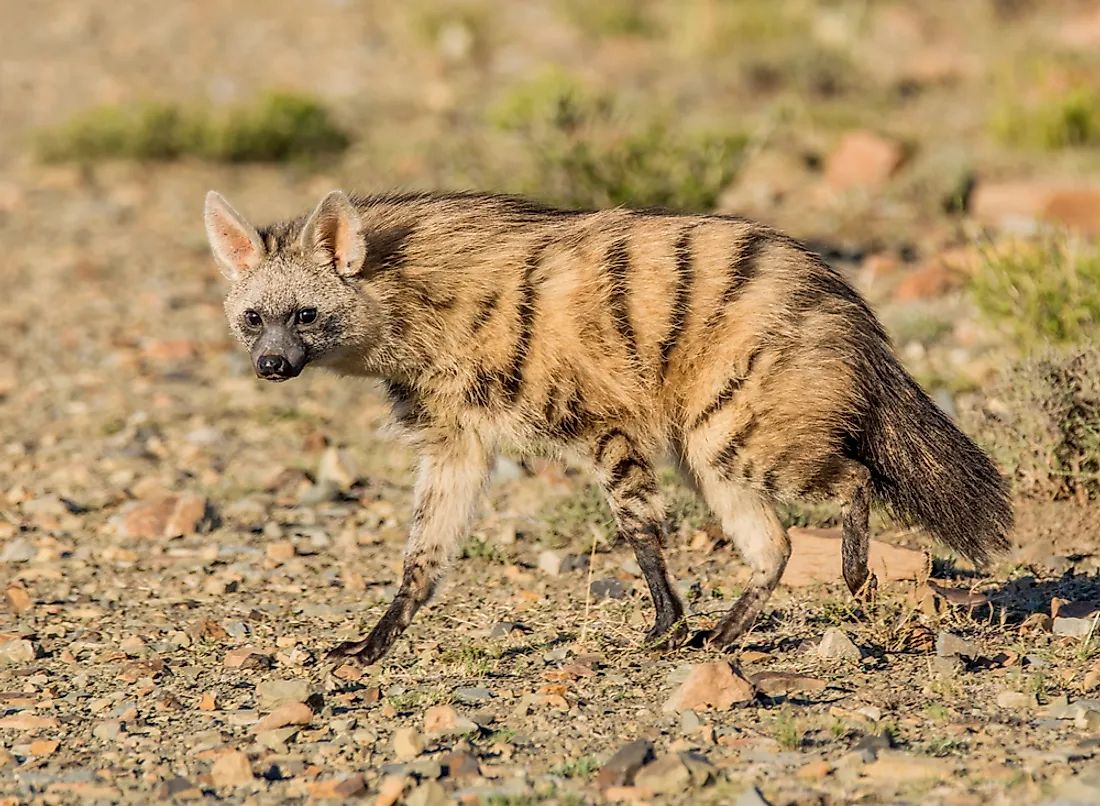What’s the Best Park for Aardwolves?
A Comprehensive Guide by Great Migration Adventure – Where the Wild Gets Persona
Meet Africa’s Most Mysterious Predator
Among the great predators of Africa—the lion, the leopard, the hyena—there is one that walks in shadows, feeds at night, and rarely makes headlines. It is the aardwolf—a shy, slender, nocturnal animal that looks like a cross between a striped hyena and a fox, but behaves more like an anteater. With its tall ears, bushy mane, and long snout, the aardwolf is one of the continent’s most misunderstood carnivores, and for good reason: it’s rarely seen.
At Great Migration Adventure, we specialize in tailor-made safaris that go beyond the Big Five. For wildlife enthusiasts, researchers, and photographers who crave the thrill of the rare, few species are as coveted as the aardwolf. The question is, where should you go if you want to find one in the wild?
In this article, we’ll take you through:
-
What makes the aardwolf unique
-
Which parks offer the best chances to see one
-
When and how to increase your odds
-
How our expert guides help you spot this elusive animal
-
The conservation story of the aardwolf

So, if your safari dreams include mysterious nighttime creatures, termite feasts, and stories few others can tell, this guide is your invitation to the hidden Africa.
Understanding the Aardwolf
Before choosing the right park, it helps to know your subject.
What is an Aardwolf?
The name aardwolf means “earth wolf” in Afrikaans, but it’s a misnomer. The aardwolf is not a wolf at all. It belongs to the Hyena family (Hyaenidae) and is most closely related to the striped hyena. However, unlike its cousins, the aardwolf is insectivorous, feeding almost exclusively on termites—up to 300,000 in a single night!
It is solitary or found in mating pairs, strictly nocturnal, and has adapted to semi-arid grasslands, scrublands, and savannahs where termite populations are high.
Key Features:
-
Size: 8–10 kg (about the size of a small dog)
-
Color: Yellowish coat with black vertical stripes and a bushy black-tipped tail
-
Behavior: Shy, quiet, and rarely aggressive
-
Diet: Termites (particularly Trinervitermes), occasionally beetles and larvae
-
Activity: Nocturnal; rarely seen in daylight
What Makes an Aardwolf Safari So Special?
At Great Migration Adventure, we believe that seeing an aardwolf in the wild is like winning the wildlife lottery. Here’s why:
-
Low encounter rate makes it a rare and rewarding sighting
-
Their behavior is unique—you may witness careful termite foraging or territory marking
-
They’re harmless and incredibly beautiful when seen up close
-
Spotting an aardwolf often means you’ve gone deeper than the average safari traveler
Now, let’s get to the heart of the matter: Where should you go to find one?
The Best Parks in Africa to See Aardwolves
After years of safari exploration, nocturnal game drives, and collaborating with local trackers, we’ve identified five key regions where aardwolf sightings are most likely. Each offers its own seasonal rhythms, terrain, and approach to game viewing.
1. Central Kalahari Game Reserve – Botswana
Remote, Wild, and Aardwolf-Rich
For serious wildlife lovers, the Central Kalahari is the crown jewel of aardwolf destinations. With its vast open plains, low predator density in certain areas, and dry climate that supports termitarium-rich habitats, this park is one of the most reliable locations for aardwolf sightings.
Why It Works:
-
Excellent termite activity at night
-
Low human interference and traffic
-
Dry season means sparse vegetation, improving visibility
Best Time to Go:
June to October (Dry season for clearer night drives)
Wildlife Pairings:
-
Brown hyena
-
Bat-eared fox
-
Aardvark (with luck!)
-
Springbok, oryx, and cheetahs in the day
Great Migration Adventure Tip:
We offer fly-in expeditions with expert trackers, specially outfitted vehicles for night viewing, and thermal cameras to increase your odds of spotting nocturnal animals like the aardwolf.
2. Laikipia Conservancies – Kenya
Night Drives, Science, and Solitude
Laikipia may not have the fame of the Maasai Mara, but it offers some of the best night drives in East Africa. Several private conservancies here—like Ol Pejeta, Lewa, and Ol Jogi—have documented consistent aardwolf sightings due to controlled access, predator management, and conservation focus.
Key Features:
-
Night drives are legal and common on private land
-
Scientists monitor aardwolf populations
-
Rich savannahs and bushland that support termite nests
Best Time to Visit:
July to October (Dry season with better road access and clear skies)
Wildlife Pairings:
-
Striped hyena
-
Leopard (often hunted by aardwolves)
-
Grevy’s zebra, reticulated giraffe
Great Migration Adventure Experience:
Our Laikipia safaris include educational talks by researchers, optional camera trapping workshops, and luxury bush camps positioned near known aardwolf territories.
3. Etosha National Park – Namibia
Desert Lights and Striped Shadows
Namibia’s Etosha National Park is famous for stark beauty, big game at waterholes, and an open landscape that enhances nocturnal animal sightings. Aardwolves are not uncommon here, particularly in the western sector and near the park’s southern borders.
Advantages:
-
Sparse vegetation makes it easier to spot small nocturnal animals
-
Many waterholes attract insect life, drawing aardwolves nearby
-
Camp-based night drives offer focused nocturnal viewing
Best Time:
May to September – clear, dry, and cool nights are best for activity
Wildlife Pairings:
-
Honey badger
-
African wildcat
-
Brown and spotted hyenas
-
Rare black rhinos by day
Great Migration Adventure Add-on:
We provide self-drive support for experienced guests with custom Etosha maps showing “hot zones” for aardwolves and guidance on how to read spoor and signs.
4. Serengeti Ecosystem – Eastern Corridor & Ndutu, Tanzania
Big Cats by Day, Aardwolves by Night
While most visitors come to Serengeti for the migration and big predators, a few key pockets of this ecosystem are known for smaller carnivores — including the elusive aardwolf.
The Ndutu area (part of Ngorongoro Conservation Area) and the Namiri Plains (in eastern Serengeti) have both reported sightings in the past 10 years, especially during dry months.
Why It’s Notable:
-
Off-road driving allowed in Ndutu means tracking is more flexible
-
Nighttime insect activity is high
-
Fewer tourists in certain zones = less disturbance
Season:
December to March (for calving season)
June to October (dry season for open views)
Wildlife Pairings:
-
Serval cats
-
Bat-eared foxes
-
Spotted hyena clans
Great Migration Adventure Advantage:
We run specialized night drives in partnership with camps licensed for off-road and nighttime exploration — a rare offering in Tanzanian parks.
5. Makgadikgadi Pans National Park – Botswana
The Wild, White Salt World of Ghost Animals
Makgadikgadi is one of the most ethereal landscapes in Africa—wide, flat, and surreal. It’s also home to healthy populations of insects and small mammals that support aardwolves, aardvarks, and brown hyenas.
During the green season, when rains come and the salt pans burst into life, aardwolves emerge from burrows earlier, making them easier to spot.
Unique Points:
-
Known for rare species: meerkats, bat-eared foxes, aardwolves
-
Opportunity to combine wildlife tracking with Bushmen-guided walks
When to Visit:
November to April – the green season means more insect activity and higher aardwolf encounters
Great Migration Adventure Specialty:
Stay at Jack’s Camp or Camp Kalahari, where we coordinate moonlight safaris with local trackers and naturalists deeply familiar with the land.
Honorable Mentions
-
Kgalagadi Transfrontier Park (South Africa/Botswana): Fantastic dryland sightings; one of the best places in southern Africa.
-
Mikumi & Ruaha National Parks (Tanzania): Not consistent, but occasional sightings reported in grassy areas.
-
Selous/Nyerere National Park (Tanzania): Remote sightings have occurred in drier regions, though rare.
How to Maximize Your Chances of Seeing an Aardwolf
At Great Migration Adventure, our guides use specific strategies to improve your odds:
1. Go at the Right Time
-
Dry season = more visibility and concentrated insect activity
-
Avoid full moons — aardwolves are less active on bright nights due to predation risk
2. Night Drives are Key
-
Aardwolves are almost exclusively nocturnal
-
Parks with legal and guided night drives dramatically increase your chances
3. Use Thermals or Infrared Lights
-
Our advanced vehicles come equipped with thermal scopes and red-light torches, minimizing disruption while improving detection
4. Work with Knowledgeable Trackers
-
We train our guides in spoor recognition and territory mapping
-
Local trackers often know burrow locations and travel corridors
5. Stay Multiple Nights in the Right Habitat
-
Aardwolf sightings often happen by chance, so give yourself time in targeted zones
Behavior to Watch For
Should you be lucky enough to see an aardwolf, keep your eyes peeled for:
-
Tail flicking while foraging
-
Erect mane when startled
-
Urine-marking near termite mounds
-
Sniffing and scanning with ears upright
They may freeze under your spotlight, giving you a perfect chance to admire their ghostlike grace.
Conservation Status
The aardwolf is listed as Least Concern by the IUCN, but that doesn’t mean it’s safe. Their survival depends on:
-
Preserving termite-rich grasslands
-
Preventing the use of pesticides (which kill their food source)
-
Controlling domestic dog populations (which spread disease)
At Great Migration Adventure, we support local conservancies and researchers studying small predator populations, ensuring our tourism dollars contribute to meaningful protection.
Aardwolf vs Aardvark: What’s the Difference?
These two nocturnal animals are often confused:
| Feature | Aardwolf | Aardvark |
|---|---|---|
| Family | Hyaenidae (hyena) | Tubulidentata |
| Diet | Termites (no digging) | Ants and termites (digs burrows) |
| Appearance | Striped, foxlike, mane | Pig-like, long snout, big ears |
| Sociality | Solitary or pairs | Solitary |
| Activity | Strictly nocturnal | Mostly nocturnal |
On some of our nocturnal-focused itineraries, it’s possible to see both in one trip — the ultimate small-mammal double feature!
Sample Itinerary: Aardwolf Safari
7-Day “Ghost in the Grass” Safari Experience
Day 1–2: Arrive in Laikipia (Kenya)
-
Settle into your conservancy lodge
-
Night drive with spotlight for aardwolf and striped hyena
Day-3–5: Fly to Central Kalahari (Botswana)
-
Deep exploration of Deception Valley
-
Guided walk with Bushmen trackers
-
Thermal night drives
Day 6–7: Transfer to Makgadikgadi
-
Stay at salt pan lodge
-
Night safaris and educational talks
-
Optional meerkat visit or horse ride on the pans
Included:
-
Private guide
-
Thermal imaging gear
-
Custom photography vehicle
Finding an aardwolf isn’t easy. But that’s what makes it so special.
It’s the reward for those who go further. Who drive longer, wait later, and listen harder. Who know that Africa’s magic isn’t only in its size—but in its subtleties.









